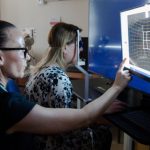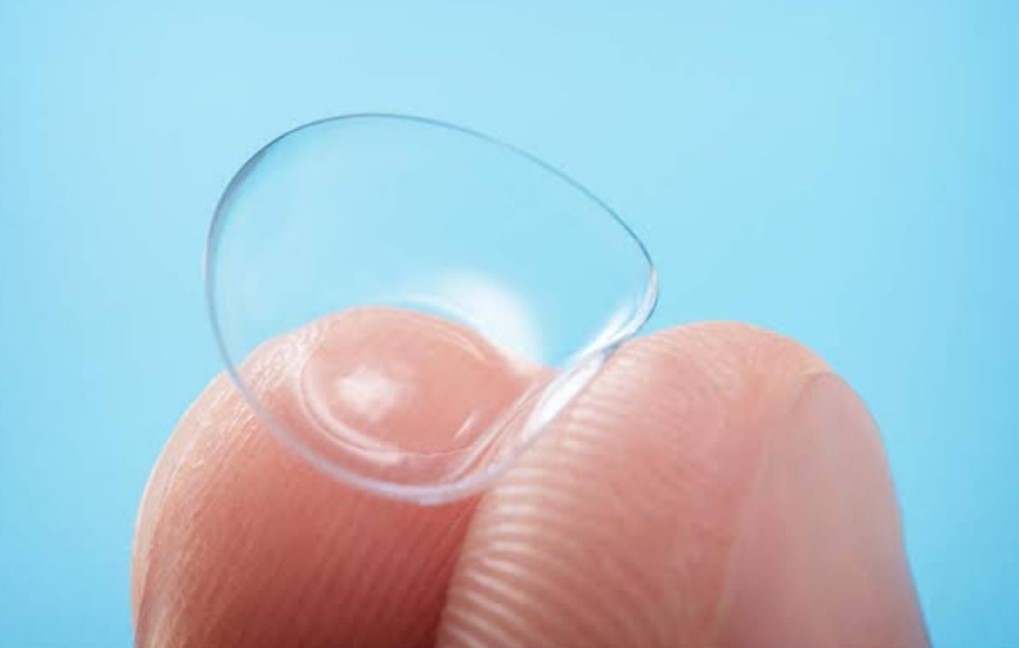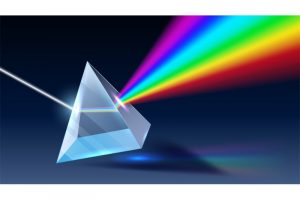LIGHT :
Light is electromagnetic radiation that can be detected by the human eye. Electromagnetic radiation occurs over an extremely wide range of wavelengths, from gamma rays with wavelengths less than about 1 × 10−11 metres to radio waves measured in metres.
The lighting industry uses several different units to measure light, depending on what information is needed.
Below are a few of the most common units and terms:
Flux (Luminous Flux) – Originating from the Latin word ‘Fluxus,’ meaning flow, flux is the amount of energy a light emits per second, measured in lumens (lm).
When it comes to lighting, you need to consider watts (W) (energy used) versus lumens (lm) (brightness). Or electricity consumption versus light output. Lumens are weighted for human perception where as watts are not.
Lumen (lm) – The SI unit of luminous flux, this is a unit of light flow.
Watt (W) – The unit of measuring electrical power, this is a radiometric measurement.
Intensity of Light – The quantity of visible light that is emitted in unit time per unit solid angle.
Candela (cd) – The SI base unit of luminous intensity. It is a unit of luminous intensity of a light source in a definitive direction. 1 lumen = 1 candela x steradian (the SI unit of solid angle).
Illuminance – The amount of luminous flux per unit area .
Lux (lx) – Lux is a standardized unit of measurement of the light intensity. The SI unit of illuminance and luminous emittance. One lux is equal to one lumen per square meter – formula: Lux – Lm/m^2
Footcandle – A non-SI unit of light intensity. While lux is lm/m^2, a footcandle is lm/ft^2.
Luminance is the intensity of light from a surface per unit area in a given direction.
1 cd/m^2 = 1 nit
Nit (nt) – A name given for a unit of luminance.
For an easier understanding, think of a lamp that produces light.
The light from a lamp is measured in lumens (measure of light intensity)
The light that falls on a surface is expressed as lux
The human eye sees this visually in terms of brightness, or luminance, that is measured in candelas
Overall, radiometry is the science of measuring electromagnetic radiation. In regards to optics, it refers to the detection and measurement of light waves in the optical portion the electromagnetic spectrum (infrared, visible, and ultraviolet). Radiometry also includes characterizing the distribution of the radiation’s absolute power.
Why is Radiometry Important ?
Radiometry encompasses a wide variety of needs for sensing and measuring light.
4 Conventionally Used Geometric Descriptions in Radiometry
The fundamental unit of radiometry is called Radiant Flux.
1. Radiant Flux/Power – Expressed in watts, radiant flux can be defined as the total optical power of a light source. It can also be defined as the rate of flow of radiant energy. You can think of it as the total amount of light emitted from a light bulb.
2. Radiant Intensity – Also measured in watts, radiant intensity is the amount of flux emitted through a known solid angle.
3. Irradiance – Measured in watts per square meter, irradiance is the measurement of radiant flux on a known surface area.
4. Radiance – Measured in watts per square meter Steradian, radiance is the measure of radiant intensity emitted from a unit area of a source.
Photometry is a subset of radiometry that only applies to the visible portion of the electromagnetic spectrum. While radiometry focuses on measuring radiant energy in terms of absolute power, photometry takes into account the response of the human eye and focuses on measuring light in terms of perceived brightness.
Photometry is the “science of the measurement of light intensity”, where ‘light’ refers to the total integrated range of radiation to which the eye is sensitive.
Why is Photometry Important ?
Photometry measures visible light from a person’s perspective.
Common Photometry Applications:
As with radiometry, applications of photometry are also diverse. It is used in a number of industries to test the intensity of light produced by displays, instrument panels, night-vision devices and more.
The basic unit of photometry is the lumen. Photometry consists of four basic concepts :
1. Luminous flux – Measured in lumens, luminous flux is the measurement of total perceived power emitted in all directions by a light source.
2. Luminous intensity – Measured in candela, luminous intensity is the amount of light emitted by a source in a particular direction.
3. Illuminance – Measured in lumens per unit area, illuminance refers to the amount of light incident on a surface. Illuminance can also be referred to in foot-candle. 4. Luminance – Measured in candela per square meter or nit, luminance is the total light emitted or reflected from a surface in a given direction. It indicates how bright we perceive
the result of the interaction of the incident light and the surface.
Spectrometry – Measuring Wavelength,
Spectrometry is known for the science and utilization of spectrometers for measurement and analysis. It is the study of interactions between light and matter, and the reactions and measurements of radiation intensity and wavelength.
The diagram below shows how spectrometry is used to analyze a sample –

Spectrometry uses:
In astronomy, we can use the unique spectra to identify the chemical makeup of objects in space.
We can also use it to identify properties about space objects: chiefly their temperature, as well as their velocity.
It has applications in metabolite screening and for analyzing and improving the structure of drugs.
Spectroradiometry is the “measurement of light energy at individual wavelengths within the electromagnetic spectrum. It can be measured over the entire spectrum or within a specific band of wavelengths.”
Two basic concepts of Spectroradiometry: Spectral Radiance – The radiance of a surface per unit frequency or wavelength. The SI units for spectral radiance is Watt/square meter Steradian nanometer.
Spectral Irradiance – The irradiance of a surface per unit frequency or wavelength. The SI units for spectral irradiance is Watt/cubic meter.
How to Measure Light Intensity :
Calculating the intensity of light depends on the light source and the direction in which it radiates light. The amount of light falling on a surface is known as illuminance and is measured in lux.
In photometry, luminous intensity is a measure of the radiant power emitted by an object in a particular direction and is dependent on the wavelength of light being emitted.
What matters the most in terms of measuring light intensity is the actual number of lumens falling on a particular surface.
Measuring Light Levels
flux is the total light output. With watts referring to absolute power and lumens being weighted for human perception.
Tools Of Used to Measure Light :
1. Photometer :
A photometer is an instrument that measures light intensity. It can be defined as an instrument that measures visible light.
Two types of photometers are:
- Luminance meters – Determine the visible energy output of a light source. Luminance measurements are used for products such as traffic lights and automobile tail lights.
- Illuminance meters – Measure the visible energy falling on an object’s surface.
2. Integrating Sphere :
“An integrating sphere collects electromagnetic radiation from a source completely external to the optical device, usually for flux measurement or optical attenuation.”
Integrating Sphere Fundamentals and Applications
3. Spectrometer :
“The basic function of a spectrometer is to take in light, break it into its spectral components, digitize the signal as a function of wavelength, and read it out and display it through a computer.”
4. Light Meter :
A light meter is a device used to measure light levels. Light level is the amount of light measured in a plane.










